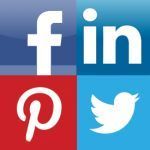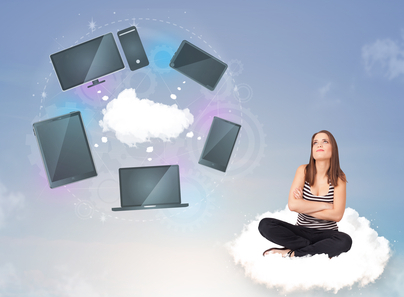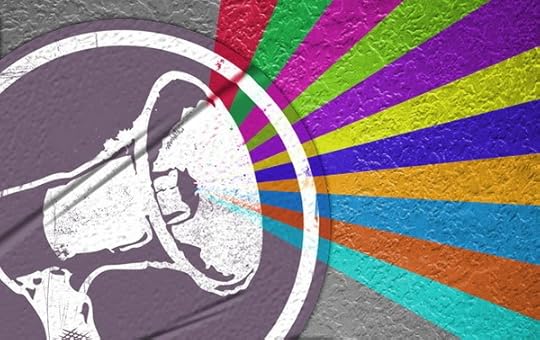Erik Qualman's Blog, page 631
August 15, 2013
5 Industries Who Need to Step Up Their Social Media

It may seem like the majority of businesses, large and small, are using social media, but there are some industries that just don’t get it.
Some of these industries are using it, but not well, while others aren’t utilizing the benefits of social interaction at all.
The following industries are massive industries, with thousands of companies within them. Don’t make the same mistake they are, and use social media to your advantage.
1. Hotels and Hospitality
Believe it or not, tourism and hospitality is failing with social media. Think of the last time you saw a trend on Twitter about a hotel? If it didn’t have to do with a celebrity hotel mishap, it probably wasn’t made known. The fact is, a good chunk of hotel owners, hospitality and tourism professionals aren’t using social media the way they should. They may not realize the many benefits they garner by using sites like Twitter and Facebook, and it is only going to hurt them. Since the majority of travelers rely on online reviews when choosing a hotel, they are making a huge mistake by not engaging with potential guests.
2. Banks and Financial Institutions
Your bank probably doesn’t use social media much either. The general consensus here is that financial institutions don’t need much marketing, because people are going to need a bank regardless. While this is true in a sense, it is still a mistake. Banks that are losing their customers to other banks is largely due to the effect those smaller banks are getting with social media. A small neighborhood bank is holding onto their customers because they are engaging more. One big way to do this is with social media. The major banks like Bank of America and Wells Fargo really need to step up their game.
3. Construction
The construction industry is using social media the least out of all industries. When was the last time you saw a post from your neighborhood contractor for new home construction, roofing repair or home additions ? The answer is probably almost never. Only about 29 percent of employees in construction industries are using social media, and even less of the companies are using it. Construction trades seem to still be old-fashioned, relying on traditional advertising like word-of-mouth. But they will soon learn word-of-mouth is now relying on social media, so they need to step it up or they’re going to start losing business and their brand will suffer as a result.
4. Wholesale Companies
With the increase in e-commerce, wholesale companies really need to start increasing their social media presence. The lack of interaction with others online is going to hurt them, especially if they are providing wholesale drop shipping. Online retailers are using social media, and skipping over potentially great wholesale companies because they aren’t making their presence known.
5. Real Estate
This is perhaps one of the most surprising on this list, because in real estate, they rely on their reputation and sales efforts. The fact that real estate as a whole isn’t using social media, is fairly shocking. Like construction, this has to do with people working in the real estate industry not using social media, and the companies themselves. There has been a slight increase in fan pages on Facebook for real estate, but not much engagement.
These industries may not be using social media in the right way, but you don’t have to make the same mistake.
By realizing where they are going wrong, you can do the opposite and truly make social media efforts worth it for you.
Photo credit: comfortsuites.com
[image error]
August 13, 2013
How to Keep All Of Your Social Networks Organized

Since social media became a daily part of most people’s lives, countless tools have popped up that promise to help with social organisation and management. However, there are so many different tools, so choosing the right one can be a challenge. The urge for organisation then becomes a dash to find a program that is multi-featured, allowing you to get as much out of one centralized tool as you can.
So, what are the best tools for keeping your virtual social life from getting too chaotic? The three tools below offer abundant features and user-friendly interfaces that even the most overwhelmed social media user can appreciate.
View All Networks in One Dashboard
Image via Flickr by Blue Genie
What You Need: Hootsuite
It might be easier to list what Hootsuite can’t do. Just a few of this all-encompassing tool’s features include linking multiple accounts, scheduling posts, monitoring keyword mentions, and creating analytics reports.
And, just about any social profile can be managed from your Hootsuite dashboard. Twitter, LinkedIn, Facebook, Google+, Foursquare, and even WordPress blogs are just a handful of the accounts you can monitor and manage via Hootsuite. If you’re spreading yourself thin among too many networks, this multi-tasker is probably the best option for you.
Price: Basic accounts are free, but a Pro account ($9.99 per month) allows for many more features. The paid account is most useful for businesses managing multiple accounts, but the free version is sufficient for the average user.
Manage Social Accounts From Your Desktop
What You Need: TweetDeck
TweetDeck boasts many of the same features shown above, allowing users to manage multiple social media accounts and schedule posts for later. But, this tool’s biggest advantage is its interface. Instead of requiring users to click between tabs to view different social networks, TweetDeck has a column-based interface that fits all of your social activity on one screen.
But, the standout feature of TweeDeck is it’s downloaded onto your desktop. Why is this a good thing? If you want to focus on your social activity and not get distracted by having too many browser tabs open, TweetDeck might be right for you.
Price: Free
Stagger Updates Throughout the Day
What You Need: Buffer
Whether you’re posting updates from a PC, tablet, or a smartphone running on the BB10 OS, Buffer is a huge time-saver for avid social media users. It’s simply packed with amenities to unify your social media efforts.
For one, it frees up your day by posting content for you to Facebook, Twitter and LinkedIn. From within the Buffer dashboard, you can enter all of your upcoming social media posts, and then the tool staggers everything to post throughout the day. This is perfect for busy days where you won’t be able to give your social profiles proper attention.
Another huge perk of Buffer is you don’t need to visit the site’s dashboard directly in order to use it. The Chrome extension lets you quickly share any page you’re reading. You can either share immediately, or “buffer” it for later.
Basic service is free, but power users and business may be interested in a paid account ($10 per month) which allows you to link up to 12 social networks.
If you can’t be bothered with tools to keep you organised, you can look for social accounts that help you sync all your social platforms together. Then, when you post to one social media account, your updates will also go to other accounts you have connected.
[image error]
August 7, 2013
You Won’t Get on a Wheaties Box by Playing Call of Duty

Since the dawn of man, we have valued the strong. Our hunter-gatherer ancestry cherished the capable, and those who were physically fit provided for the existing communities. The strong were a necessity then. In Ancient Greece, the Olympics were created as a celebration of the human body, and the strength of young men. Wars erupted and the form of a strong man became the ideal of society, as a necessary and respected role within society. That idea, has still not changed, and the hunter-warrior is, unfortunately in many cases, still revered today and has become a strong root for misogyny and other forms of sexism.
Today, the sportsman has replaced the warrior as the ideal strong man. Achilleus and Herakles were replaced by Michael Jordan and Muhammad Ali, and the athletic man is still respected for what they are capable of doing with the human body. These men are heroes, like the Greek ones before them, and we treat superstars like demigods. We feel so strongly for sports because they have roots from a survival instinct, and have a strong sense of masculinity associated with it (which is perhaps why female professional sports leagues struggle to gain traction).
Video Games, and games in general, exist for an entirely different reason. They were found to pass time, not as a necessity for survival, but as a comfort in times of peace. As such, the archetype of a video gamer has more or less remained the same, a non-fit young male who is typically portrayed as a geek. Organized professional gaming, also known as electronic sports or eSports, don’t have the same reverence as their real-life counterparts have.
However, the times have changed with gaming, as the boundless nature of games are slowly being revealed, the average gamer is 30 years old, and the average game purchaser 35. The longevity of a video game hobby can last well into later life, but sports take a toll on the body. The sportsman is almost always a fit
young person, the bodily ideal since antiquity because they need to be, but the gamer is slowly evolving to represent the norm today, an average person:
someone like you or me, there is no outward showing of a skilled gamer.
Fifty-eight percent of Americans play video games. Forty-five percent of all game players are women. In fact, women over the age of 18 represent a
significantly greater portion of the game-playing population (31 percent) than boys age 17 or younger (19 percent). Fifty-one percent of U.S. households own a
dedicated game console, and those that do own an average of two. Sports players are representative of a physical elite, the young and the strong, but video
gamers are gaining mainstream action, and the typical gamer is as common as you or me.
Games that are popular, however, do tend to be the ones that represent masculinity, and pump they are designed to pump testosterone. First person shooters are by far the biggest releases today in mainstream game studios, for a masculine association with the military, but other genres like the third person Role
Playing Games like The Last of Us or Mass Effect and racing games like Forza and Gran Turismo also represent the societal adoration of manliness. Main
characters tend to be representative of a bodily ideal (first person shooters with soldiers, main characters typically in their prime), and we can see that with the popularity of Duke Nukem in the 90s, an almost caricature of male tendencies. Females are largely portrayed as damsels in distress or weak, saving Princess Peach comes to mind.
Electronic sports don’t have a Michael Phelps. Watching a League of Legends tournament, most of the players are small young players who look like they can’t lift more than 20 pounds, and this is why eSports will fail to gain a mainstream following anytime soon. Professional gamers are not athletes. You can’t see the
hard work these people put into their craft like you can on athletes: there aren’t any muscles. When I see Robert Griffin III, I can see that he’s strong,
but this is not the case with professional gamers. You can’t see on the outside how good a video gamer is, or is perceived to be. Electronic sports have no
heroes, no demigods.
Actually, I see eSports similarly to how I view professional poker. There are no young people who idolize professional poker players, every bar isn’t playing the World Series of Poker, and there isn’t a parade in the home town for the winner of the World Poker Tour. Professional poker players are largely out of shape:
there’s nothing sexy about the players.
However, that discredits what professional poker has been able to achieve. Poker is vastly more popular now than it was before. Every Vegas casino has a poker room now with sit-n-go tournaments, and Texas Hold-em became extremely popular. Professional poker couldn’t get mainstream because their players weren’t sexy, but they were able to achieve something far different: the game itself is now sexy.
I can see electronic sports benefitting in the same way that professional poker did to amateur poker. The games that professionals play can be played by the layperson, much like how Texas Hold ‘em is now the favourite poker game over five card stud because of the popularity of the World Series of Poker and World Poker Tour. So maybe in gaming, we’ll see a rise of PC gamers over console gamers by those who want to emulate a professional experience. Yet I see more potential for eSports than I think poker ever had.
I look to Korea and East Asia, where professional gaming does seem to have gained traction. The games that are played aren’t Call of Duty or Need for Speed; it’s Starcraft, a strategy game. Perhaps, the success of eSports lies with a changing perception of a human ideal. We don’t see that professional video
gamers are going to be good superficially based on height and weight, but we do see that they are very quick and smart in gameplay. Maybe the success of
professional StarCraft in Korea is indicative of a larger movement in a changing of a human ideal: we are valuing intelligence more than physical
strength now. Thomas Hobbes said in the Leviathan:
For as to the strength of body, the weakest has strength enough to kill the strongest, either by secret machination or by confederacy with others that are
in the same danger with himself. And as to the faculties of the mind, setting aside the arts grounded upon words, and especially that skill of proceeding
upon general and infallible rules, called science, which very few have and but in few things, as being not a native faculty born with us, nor attained, as prudence, while we look after somewhat else, I find yet a greater equality amongst men than that of strength.
So maybe, we have come so far as a race to have changed the things we valued from the beginning of society. Perhaps we developed enough technology where physical strength is becoming irrelevant, and masculinity is thrown out for wit, and that’s how electronic sports can succeed. An entire overhaul of societal perception is being set by professional hobbyists. With a growing disdain for gender constructs and overt masculinity, perhaps a success in electronic sports will show that we, as a society, finally value brains over brawn.
[image error]
August 6, 2013
10 Operations to Get Multichannel Success

Marketing research provides that multichannel consumers are able to contribute three to five times more sales as compared to a single channel consumer and this brought about that growth of the multichannel success in the retail industry. Consumers are now giving high preferences on multichannel business and with this changing consumer mandate, retail marketers find the need to take a step ahead towards getting into a multichannel approach in online marketing in order to address this evolving demands of the consumers. If you are in the retail business, you now understand that multichannel business operations will give you more sales and a potential marketing growth. Here are 10 operations that you can do in order to attain a multichannel success for your business.
1. Use digital technology to expand your business
Using digital technology is a good tool that can help retailers to understand their target consumers’ behavior. It is a tool that could provide consumer data that will help improve their business services and to target products that are best to appeal the consumers. The use of social media can also help improve your ability to reach out to a wider scope of target consumers to present your brand.
2. Operate a land based store and online shop
Online retailers will realize that operating an online shop will not suffice to cover their possible market sales. Operating in both an online and offline store will give more value for your eCommerce business. Online shops should also cater to mobile shopping in order to cover more markets. With the online consumers giving high preference to retail marketers that cover multiple channels for their business, it is a valuable option that you should take.
3. Increase product line
Consumers are always on the lookout for what is new on the market. You can keep them coming back by providing them new products being added to your existing line. This is one way of engaging your existing customer base and attracting new ones. You can have a totally new product or a line of products or improve the existing ones to make it more appealing to customers.
4. Keep Improving Customer Service
Most customers become loyal not only because you can provide them with the service or product that they want. They stay because you give them good customer service. Good customer service should be done upfront during the sales but it should not end there. Your relationship with customers will continue if you give them good after sales customer service by responding to their complaints and providing them their needs in relation to your product or service they obtained. Most companies thrive not because they have good products but because they care for their customers.
5. Staff Training
Success in multichannel marketing also requires that you provide continuous training to your staff. There are numerous training programs that can improve on the way your staff handles tasks. This will improve their productivity and make them more efficient in performing their job. There are also trainings to boost the morale of your employees that can keep the workplace environment fun and positive. Refresher trainings should also be provided to make sure that your staff will provide excellent customer service every time to every customer.
6. Multitasking
One advantage that you can get through trainings is providing additional skills that your employees can apply to improve their performance and cover more tasks. This can save your business manpower expenses by having existing employees do multi-tasking so you don’t need to hire additional manpower.
7. Loss Prevention
Risks or losses can affect greatly affect your income. If you have a physical store, there is a risk of losing sales and profit with shoplifting. You can prevent this by investing in shoplifting devices and save money in the long run. You can also improve your customer service to effectively discourage shoplifting. Fire prevention will also decrease your chances of losing large amounts of money by placing proper fire extinguishers. Note also that a single mistake in the price tag can create a loss so be sure to have a quality check on all your products.
8. Hire Proper Individuals
Hiring the wrong employee can prove to be another loss for your business. Make sure that you know the strength and weaknesses of each of your staff so that you know where to place them. Having the right people in the right department will empower your business because each of them is fit for the job.
9. Back Office Enhancement
The back office of every business is as important as the front office. The records of your customers are valuable and you would want to have a good system in place to keep track of the data. Back office employees should be as efficient as the front office employees. This is where you can get the reports to show you how your business is performing and will even provide you with the indication on the preferences of your customers.
10. Brand Management
Be good for your brand. Your customers will remember your business through your brand like Netspy Mobile. You want to give them the impression that when they see your logo or your brand, they know the type of quality that they can get through your products and services. Make sure that your products, services and your employees are all aligned to the mission and vision of your brand. Get a good brand management team. Your brand is how you will be perceived by your customers.
[image error]
Mobile Marketing Trends [IG]

Mobile marketing is taking the world by storm. As more and more people take to their cell phones, it opens us to a whole new style of marketing options. Today, there are about 6.8 billion cell phones in use, while there are 7.1 billion people throughout the world. That means that if you’re not paying attention to mobile marketing, your website is missing out.
When considering mobile marketing, there are a few things a company needs to think about. First, they need to consider whether they’re going to create a website that works the same on a desktop and a cell phone, or if they are going to have a responsive design site. In addition, a separate app is an option. Each of these are viable options, depending on the marketing strategy you plan to use.
People are spending more time on their mobile devices and less time on their desktop computers. In fact, in 2011, there was 8x the amount of mobile traffic data as there was Internet data in 2000. Those 11 years meant a big push for mobile devices, and we’re just going to continue to see this number grow. Why are people using their phones and tablets? It’s because they’re easy to travel with. You can take your phone anywhere. Your desktop, however, needs to stay in one place.
Whether you own a website, are interested in marketing strategies, or simply prefer to browse the web on your Dell Inspiron Ultrabook, understanding how mobile marketing trends affect you is important. In addition, the way things have changed over the last few years shows us how people have started looking at cell phones and mobile devices in general in a new light. What mobile marketing strategies are coming in the next year or two? Consumers and marketers alike can benefit from this information.
[image error]
August 5, 2013
3 Easy and Creative Ways for Brands to Use Instagram

Instagram has been an app of choice for many especially because you can revamp images with filters to make them more unique and creative. Brands came on board and adopted the application as well, and now there are so many creative and fun ways to use the app to your advantage (aka your marketing arsenal).
1. Behind the Scenes - One of my favorites is the behind the scenes content, which allows the audience to see a different side of the brand. Whether it’s a fashion show for those who couldn’t attend, showing the process of making a product, or just how the brand team interacts within the office walls, it’s always fun to see your favorite brands inner workings.
Example: Threadless
2. How-To Videos – These are great for a quick snapshot on how to make something. For example, painting a room, or applying makeup, putting together the right recipe, finding new workouts, or even making an outfit work together. Simple, but so helpful for those who want a quick tutorial.
Example: Jill Hanner
3. Live Events – Whether it’s a marathon, concert, product demo, conference, or another live event – these events are a perfect destination to take some photos and videos and show it as the event is happening. Let your audience feel like they’re there with you!
Example: ABC News
What’s your favorite way to use Instagram Photo and Video?
[image error]
August 4, 2013
Which Politicians Have Mastered Social Media?

Social media has given rise to a new type of politician.
Those that have embraced social media have received more attention and kudos from the public.
With politics being debated so hotly across different networks, the best place for politicians to connect with their voter base is through social accounts.
Sen. Wendy Davis
Senator Davis reached out to millions via Twitter on June 25, 2013.
The Democratic senator used Twitter, Facebook, and Tumblr to ask for testimonials to be used during her 13-hour long filibuster. On Twitter alone her original tweet was retweeted over 9,000 times by followers and their followers. This following is being hailed as the nation’s first ‘crowdsourced’ filibuster.
The senator’s followers relayed messages between each other and information about the events unfolding in Texas.
Thanks to the efforts of people participating in the social media storm, the public began to see the truth behind the smokescreens pushed into the journalist’s cameras.
Today, her daily reputation for strength and determination keeps rising.
Rep. Eric Swalwell
Another history-making politician, Rep. Eric Swalwell is probably the first politician to ever vote through a social media app.
Twitter created Vine, a video creation and sharing app which the representative Support for the representative grew around the nation as he voted against the Pain-Capable Unborn Act. The bill has passed in the house, but the president has promised to veto.
This history-making vote brought more political attention and arguments concerning basic rights throughout social media from both sides of the political field.
President Barack Obama
Not only does the President have more than 34 million followers on Twitter, he has more than 30 million likes on Facebook.
Social media helped the Democrat win the office in 2008 and again in 2012. The strong support of President Obama did more than bring recognition to the man for using social media, it set two social media records.
A picture of the presidential couple embracing received 755,000 retweets and more than 3 million likes on Facebook.
Senator John McCain
The former presidential candidate beat out the 2012 Republican candidate (see below) in social media expertise by a large margin.
McCain’s Klout score trails President Obama’s by only 7 points, steady at 92. Senator McCain has a reputation of being blunt which paired with his famous independent air make for a perfect social media brew.
Mitt Romney
The 2012 GOP presidential candidate reached millions with his social media campaign.
Even though the President had far more followers (12 times Romney’s numbers), the Romney campaign had more people engaged via Facebook during the campaign.
Social media has evolved to be one of the top avenues for politicians to reach their voters or potential voters.
Knowing there are millions of voters to be found on social media, can you blame them?
Photo credit: gizmorati.com
[image error]
July 31, 2013
The Day Gmail Went Down

One of the more memorable events in recent web history has got to be October 31, 2012 - The Day Gmail Went Down (…for 5 Minutes).
I noticed the massive social media buzz about this catastrophe shortly after everything was resolved – about 10 minutes later. The tweets streaming by in my Twitter feed got me wondering: where and when did the buzz happen? For how long were people talking about the incident after it happened? What were they saying?
Using my company uberVU‘s dashboard, I looked at social media mentions of “Gmail is down” and “Gmail down” for October 31st.
My research confirmed that Gmail being unavailable was, in fact, the end of the world.
Here’s what the conversation around the incident looked like:
“Apocalypse” was one of the most common words used in conjunction with “Gmail down” or “Gmail is down”, along with those exclaiming “Mayday”. People also mentioned Google’s Blogger platform being down, as well as how long the outage lasted (about 5 minutes). Quickly, people tried to “meme-ify” the trend by asking “Where were you when…[Gmail was down]?”
Most of the conversation about the incident happened on Twitter (over 2,700 Tweets with 1,200 RTs) – unsurprising, given the popularity of the platform for people tracking real-time events – with a small number of Google+ mentions occurring after the incident was over (and with mostly positive sentiment).
I could almost hear the collective internet’s sigh of relief when the error was resolved – corresponding to the spike in positive mentions surrounding the term an hour or two afterwards. Obviously this outage stung less than recent social media mistakes like the infamous KitchenAid tweet – while social chatter around the Gmail incident died down quickly, mentions of the KitchenAid mistake carried on for much longer. Interestingly, we see many of the positive statements about the incident happened an hour or two after the original incident, with an even bigger positive spike late the next morning (presumably when news outlets,blogs and individuals posted articles and Tweets about the outage and its quick resolution).
Red indicates the number of negative mentions, while green is positive and black neutral. We see how quickly the spikes of activity died down after the incident: a few people talking about it here and there (times are in GMT), but the conversations had mostly wrapped up by the end of 11/1.
Interestingly enough, the outage only affected about 10% of Gmail users across the United States, the Huffington Post reported, due to some internet connections being routed through computers in New York that were affected by Hurricane Sandy.
We’re totally amazed by the scale of the social media response to the outage given the relatively small size and short duration! It speaks to the efficiency of Google’s engineers as well as the good reputation Gmail has that both the functionality and the conversation around it recovered so quickly. I’m not sure who I’m impressed with: their engineers, or their marketing team who’ve built up such goodwill around the brand!
Surprised by any of the data? Big Gmail fan? Let us know in the comments!
[image error]
A social networks expanding targeting niche groups

We all no social networks are increasing in numbers and are targeting a niche audience. The numbers are increasing day by day and it is only a matter of time for major social networks to decrease in popularity. Social networks are also offering services so as to better help the specific groups of people the target. Some popular concepts include social networks for Expats and immigrants, religious faiths, and music enthusiasts. The future is already being predicted by these social networks. A good example is ImmiLounge. This fantastic new social network, is a basic facebook like social network, that targets American immigrants, prospective immigrants and immigration attorneys. What ImmiLounge does is, it connects all this groups of people together, and allow them to communicate, and at the same time offer numerous services that allow this group of individuals to succeed in America

Coming to and making a new life in America is the dream of millions of people around the world. Sure, you hear people talking about the U.S. economy and this, that and the other. However, make no mistake about it; America is still the land of opportunity and the number one country in the world that foreigners want to come to. And it will probably always be that way too.
So it’s only natural that people want to know as much as possible about the United States before they attempt to come over. And even once they have arrived, they still have much they need to learn. The problem is, relocating to a whole new country is harder than it sounds. It has always been hard ever since the founding fathers created America, and it still is in the 21st century. There are ways of searching online and finding out quite a bit. There are even some sites that can help out. But the problem with those websites is that they are usually one-dimensional in nature.
They either look at it from a foreigner’s standpoint or that of a newly arrived immigrant. ImmiLounge was designed to be a one-stop place where both foreigners and immigrants in the U.S. can get together, share thoughts and ideas and find out all the important things they need to know about America. immigration attorneys can also sign up, get unlimited access to all the foreign members, and offer there services to help.
At Immilounge you will find healthy immigration debates going on. Immilounge brings immigrants the latest in how to find work in America, what they are entitled to, how to get insurance, scholarships, education and more basic necessities that Americans have access to easily. For those who are trying to get here, Immilounge can refer them to the best attorneys who specialize in immigration issues. Relocating to the USA has never been this easy.
 Look, it’s hard enough trying to acquaint yourself with a brand new country and way of life. Immilounge makes this transition a whole lot smoother. And likewise, for those who are abroad but dream of getting to America, they can communicate with those who are already here, as well as avail themselves of all the resources Immilounge can provide.
Look, it’s hard enough trying to acquaint yourself with a brand new country and way of life. Immilounge makes this transition a whole lot smoother. And likewise, for those who are abroad but dream of getting to America, they can communicate with those who are already here, as well as avail themselves of all the resources Immilounge can provide.
Immilounge is a work in progress, and that is the way it always will be. We live in an ever-changing world and Immilounge will be staying abreast of those changes as they occur and educate immigrants. A very philanthropist idea and one that will probably receive a lot of criticism. I just feel that it is amazing how social media can empower the world and a social network like ImmiLounge is looking to do just that. Immigration being a major issue in the United States, I am looking forward to see how ImmiLounge will help solve this issue.
[image error]
July 30, 2013
The Growth of Multiple Screens and Online Multitasking


Americans are in the throes of a new cultural pastime — it’s called multi-screen enjoyment — and this pastime shows no signs of losing momentum. People can’t just watch TV and talk about it the following day. With the Internet, it’s all about instantaneous commentary, response and feedback via social media channels like Facebook, Twitter, and Instagram.
Multi-screen ‘infotainment’ is becoming American’s preferred choice of leisure activity. Apparently, watching television via Direct TV bundles just isn’t enough, as 80 percent of people in a recent Deloitte survey said they multitask by using mobile devices while watching TV. That trend explodes during big TV events like the Super Bowl, Oscars, and Grammy awards shows.
The 2012 online survey, “State of the Media Democracy,” by Deloitte, also revealed that 26 percent of American consumers own a laptop, smartphone AND tablet. Of particular significance is the percentage of consumer owning tablets, which has risen 177 percent in just the last 12 months. And with mobile communication and viewing use and technology also on the rise, this trend remains constant whether consumers are at home or on the road. An April report from The NPD Group reports that a whopping 87% of people in the United States are using at least one mobile or second-screen device while watching TV.
Social Media Multitasking
The multi-screen approach to consuming content has obviously not gone unnoticed, and leading social media companies are at various stages of taking advantage of it. Twitter is leader of the pack, while Facebook is playing communications catch-up.
Twitter hash tags were featured in five times as many Super Bowl ads than Facebook mentions last January, according to Lostremote.com. The article also referred to the recent partnership announced between Nielsen Ratings Company and Twitter to create a joint rating system, and business-sponsored in-Tweet video clips via Twitter Amplify. Twitter’s TV-targeted Promoted Tweets are the latest applications which appear to be on the threshold of the long-anticipated concept of interactive television. All of these developments are a wake-up call for Facebook.
Twitter clearly got under Facebook’s skin by asserting recently that Twitter is the place that 95 percent of live TV conversations currently happen. With the almighty advertising dollar at stake, Facebook responded by rolling out its own searchable hash tags for Facebook users to share more readily identifiable interests. Approximately 88 – 100 million Americans log onto Facebook nightly, but only a third of the Facebook users post TV-related commentary. While the hash tag emphasis illustrates Facebook’s obvious effort to ramp up the engagement with social TV, Twitter has already gotten off to a significant head start. Now the race is really on.
Entertainment and Engagement
Meanwhile, as Twitter and Facebook duke it out, marketers and advertisers are already on the lookout for new ways to generate visibility and revenue, only with much of the focus being on engagement, rather than just exposure.
Sony and Nissan North America tried a new tactic with a fall 2012 campaign involving second screen usage for the Spike TV show “GT Academy.” DM News reported that, using social media channels, fans of the Gran Turismo driving game on PlayStation competed with other players in the video game. Sixteen finalists would go on “GT Academy,” which is sponsored by Nissan and features its sports cars. About a million viewers participated, with the winner getting a pro racing contract. According to Nissan, the campaign helped the car maker to deliver messaging to users on their mobile devices, to further further engage with Nissan’s brand.
Similar efforts are underway internationally. In the United Kingdom, one broadband provider used a similar second-screen strategy to get Internet viewers of a quiz show to watch its four-minute video. The result was that about 17 percent of viewers watched the entire video and more than two percent of those same viewers clicked to get additional online content.
The groundbreaking Deloitte survey continues to provoke responses from advertisers and social media providers alike. No one wants to be left in the dust when tablets are included within the top five list of devices consumers find most indispensable. The same study indicates that tablet owners are more likely to upgrade their equipment over the next year than non-owners. Add in the fact that older consumers are now forming a large part of new mobile users, with approximately 32 percent of baby boomers and 31 percent of “mature Americans” ranking tablets among their three most-valuable or favorite devices. There’s much data and advertising revenue to support their multitasking needs.
The fundamental conclusion that can be derived from all of these individual experiences and data is that infotainment and multi-tasking is not something that is cutting edge, but rather a new way of life for a large percentage of people who have embraced the technological revolution of today’s evolving world.
[image error]














